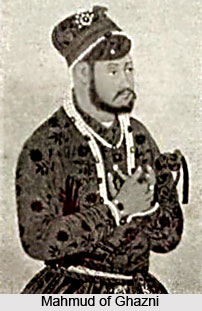 Various reasons were cited by the historians, which led to the repeated attacks of Mahmud of Ghazni on India. Mahmud of Ghazni was the first to penetrate deep into India. He was successful in breaking up the military strength of the Hindus and plundering the wealth of India. But, he did not establish his empire in India. Mahmud of Ghazni wanted to set up the glory of Islam in India.
Various reasons were cited by the historians, which led to the repeated attacks of Mahmud of Ghazni on India. Mahmud of Ghazni was the first to penetrate deep into India. He was successful in breaking up the military strength of the Hindus and plundering the wealth of India. But, he did not establish his empire in India. Mahmud of Ghazni wanted to set up the glory of Islam in India.
Mahmud of Ghazni was not prepared to follow the advice of Ulema and was purely a man of this world. Many scholars opine that he attacked Hindu temples not only because of his religious zeal but also he desired to get their wealth. According to many historians the primary motive of the invasions of Mahmud was not religious but economic. If he troubled the Hindu kings and looted their wealth, he repeated the same story with the Muslim rulers of Central Asia. He desired to possess the wealth of India. But his intention to propagate Islam and to establish its glory in India was evident in his destruction of Hindu temples and images of Hindu gods. Viewing from the circumstances of his age and the religious zeal of the Turks, who were new converts to Islam, it was quite possible for Mahmud to possess a religious fanaticism.
Mahmud of Ghazni desired wealth for the sake of wealth. He needed resources to continue his policy of expansion of the empire. Therefore, the wealth of India was alluring for him and he repeated his attacks to acquire more and more wealth from India. There was also a political purpose for his frequent invasions in India. The Ghaznavids and the Hindushahis were combating against each other since the reign of Alptigin and the Hindushahi rulers had attacked Ghazni thrice. It was essential for Mahmud to destroy this antagonistic and powerful neighbour. Therefore, he himself pursued an aggressive policy against it. The success against the Hindushahi kingdom encouraged him to penetrate deeper into India.
Like all other great rulers of his age, Mahmud of Ghazni also desired to earn fame and recognition by his conquests and victories and that also constituted as one of the reasons of his attacks on India.



















